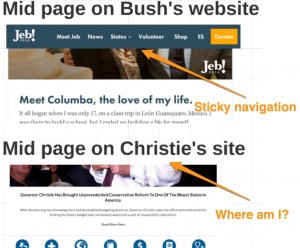Change doesn’t need to be scary
Although we’re 15 years into a new century, it still seems quite new. One thousand years, after all, is a long time. If there’s one constant in the advent of a dawning age, it’s change. Each millennium is precipitated by progress — throwing off the shackles of the former status quo to discover different ways of accomplishing goals. Some approaches are novel and short-lived, some fade away over the long haul of history, and others stick to become ingrained as the redefined norm. Not everyone views change the same way. Some greet it with anticipation. Others experience sensations of anxiety, dread and finality. Some turn toward the hopes of scientific advancement. Others worry about the consequences prophesied in various scriptural dogma. If the 21st century’s change can be encapsulated and described by one predominant aspect, we believe it lies in the nature of work and employment. To older generations, the alien appearance of the gig economy may instill feelings of uncertainty and fear. To Millennials, it spells freedom, entrepreneurialism, balance and opportunity. Yes, the foundations of traditional work arrangements have changed and will continue to do so. Income inequality between the classes, as labor economists point out each day, has grown. Yet new models are arising, and if they’re embraced, they could conquer these concerns to create a new future for talent where stability, higher earning potential and the freedom to choose employers yield untold benefits for workers and employers alike.
Because compensation represents such a significant issue in the debate between permanent and contingent work, we’re going to look at how innovative staffing leaders are helping to build a century of prosperity and productivity.
The 21st century labor landscape
As companies organize their plans and shape their goals for 2016, employment issues remain at the forefront: how to attract needed talent, how to retain top performers, how to optimize the workforce, how to fill leadership roles as aging workers depart, and more. We can certainly base near-term predictions for staffing and recruiting trends on existing benchmarks — like the importance of developing employment and talent brands, continuing to utilize social media campaigns, enhancing the candidate experience, engaging hiring managers, cultivating broader talent pipelines, focusing on more effective onboarding strategies, taking metrics seriously, and adopting a more global stance on acquisition. Yet during any of these conversations, the issue of pay inevitably creeps in.
Noted economist and former Secretary of Labor Robert Reich believes the link between lower unemployment and rising wages has been severed. He also mentions other complicating factors that could sustain the continued stagnation, or even plummeting, of wages. “For one thing,” he explains, “it’s easier than ever for American employers to get the workers they need at low cost by outsourcing jobs abroad rather than hiking wages at home.”
He further believes these changes have been intentional. Since 1979, the nation’s productivity has increased dramatically — by 65 percent. And yet median compensation has risen only eight percent. Nearly all the gains have gone to the top. “Low unemployment,” Reich concludes, “won’t lead to higher pay for most Americans because the key strategy of the nation’s large corporations and financial sector has been to prevent wages from rising.”
It’s really not a winning corporate strategy in the long term. Higher profits ultimately depend on more sales, which means lower and middle-class workers need to have enough purchasing power to buy what’s being produced.
Although we are witnessing a glut of job openings across industry sectors, median wages are still lower than they were before the Great Recession. By the close of 2014, average pay had actually fallen. So should America’s workers abandon all hope? Not at all. These statistics, in large part, reflect movements that affect full-time employees. On the flipside, there’s enough reason to believe that more opportunities are available to contingent talent than ever before — with the additional perks of enhanced work-life balance, financial independence and, yes, higher compensation.
Performance-based can drive compensation to new heights
The Citizen’s Share is a 2013 business book authored by a team of economists and sociologists from Rutgers and Harvard. The book opens with an anecdote about one of George Washington’s first acts as president of a fledgling nation. To help restore the government and economy after the fallout from the Revolutionary War, he proposed a sort of tax-cutting initiative by lowering tariffs on the fishing industry. In order to receive the credit, however, businesses “would be paid only if the shipowner had a written profit-sharing contract with all the sailors.” In essence, Washington sought a mutually beneficial solution for employers and workers.
The thought leaders from Rutgers and Harvard believe a similar profit-sharing solution can overcome the problem today — namely that U.S. corporate profits are healthy though they’re not being shared as widely. White House hopeful Hillary Clinton echoed a similar solution in a recent speech, citing her support for instituting a tax credit for companies that put a profit-sharing structure in place.
The studies discussed in The Citizen’s Share reveal that profit sharing is becoming more common than one might think — about 35 percent of workers already receive some form of it.
- Standard profit sharing: workers earn a monetary bonus that’s tied to the company’s profits
- Gain sharing: workers receive a cash bonus when their departments or organizations attain a certain metric
- Stock options: workers have the opportunity to acquire equity in the company, which increases alongside profits
More importantly, the authors discovered that profit sharing measurably increased pay and output: “Generally, the places that put in profit sharing systems tend to be more productive and workers’ total compensation goes up.” Another argument in favor of profit sharing comes from the effects of recessions. As Sr. Associate Editor Walter Frick observes in the Harvard Business Review: “One of the main theories of cyclical unemployment is that wages don’t fall quickly enough during recessions, and so firms end up firing workers instead. If some portion of compensation is profit sharing, then compensation can more easily adjust to changing economic circumstances.”
Profit sharing staffing models
The staffing industry, it seems, seldom gets its due in mainstream media. And yet, this sector has pioneered so much. Few corporations outside the staffing space devote as much time or energy studying labor trends, perfecting hiring techniques and striving to create an equitable situation for talent. Staffing professionals have been at the leading edge of diversity efforts, recruiting innovations, search and placement expertise, skills development, employment classification practices, compliance assurance and more. They’re also aggressively designing and advocating evolutionary programs that capitalize on open marketplace models and profit sharing.
Think about it. What if we created an open marketplace for available positions, let anyone apply and actually perform the work? What if we compensated only those who performed well and delivered the highest quality work? Could this approach succeed? Well, it’s already working and thriving. Sites such as UpWork and 99Designs prove that open marketplace models can flourish. These innovative companies rate and compensate participating workers based on their success in completing the projects for which they’ve signed up. Clients gain insight about each worker’s completed projects, ratings and compensation earned.
Today’s staffing solutions inherently develop crowd-based networks of skilled talent and independent recruiters. Unlike online recruitment solutions, however, the process is supported by staffing curators to ensure complete labor compliance, quality and customer service. A Crowdstaffing model streamlines recruiting and hiring processes for time-strapped hiring managers. And it’s the move toward performance-based, profit-sharing compensation structures that’s driving the success.
In the most effective iterations of a Crowdstaffing solution, independent recruiters are paid based on results. While that may sound dubious or limiting, the compensation they receive for successful placements can be substantial.
The model exposes recruiters to unlimited earning potential and ongoing opportunities, while freeing them to live their lives; they can pursue an independent lifestyle while doing what they love– a job that’s more passion than work. The model turns them into entrepreneurs, focused on excellence; they understand that the MSP’s success becomes their success, and they relish the chance to exceed their own goals. This unique approach has proven to deliver higher quality talent, in a shorter timeframe, with superior placement rates. In our own Crowdstaffing solution, recruiters earn between 33 percent and 60 percent of the profits for each placement. Many have described the profit-sharing structure as “life changing,” enabling them to earn six figure incomes — four to five times more than they made under traditional compensation plans.
Sharing in the sharing economy
The sharing economy, despite some potential permutations, is likely here to stay. The advantages to employers and cost-conscious consumers are apparent. Yet there are untold benefits awaiting talent willing to embrace and capitalize on the changing dynamics of the non-traditional workforce: independence, choice, skills development and greater income opportunities.
Though wages may not see any noteworthy hikes this year for the full-time population, that doesn’t necessarily hold true for skilled contractors, freelancers and supertemps, who are quickly becoming a new norm. Contractors actually have the ability to earn more money through greater negotiating power and performance-based incentives. Our new mold of staffing curators understand this, and by sharing profits, they’re ensuring that the sharing economy will continue and thrive.
Business & Finance Articles on Business 2 Community
(99)






